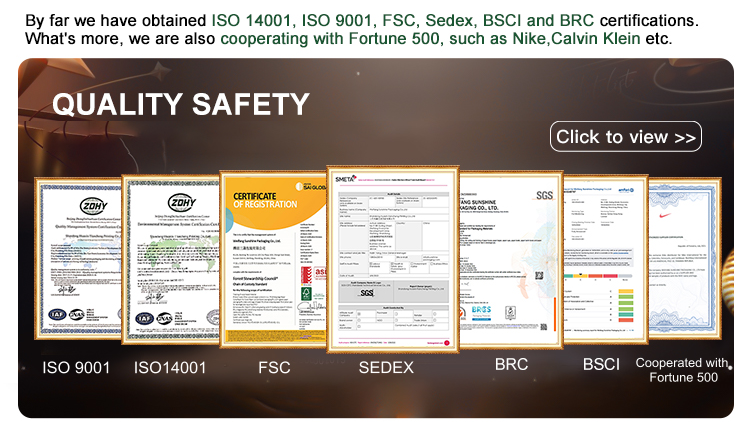For manufacturers, suppliers, and brands exporting paper packaging, understanding the customs requirements in the European Union (EU) and the United States (US) is critical. Non-compliance can lead to shipment delays, fines, or even rejected orders, damaging your credibility with international buyers.
This guide outlines what buyers and suppliers need to know when exporting custom paper boxes for food, retail, and subscription products to EU & US markets.
1. Understanding Paper Packaging as a Product Category
Before diving into customs, it’s important to classify your products correctly. Paper packaging typically includes:
- Folding cartons / paperboard boxes
- Corrugated shipping boxes
- Food-grade boxes (takeaway, ready meal, bakery)
- Gift and retail packaging
Why it matters:
Correct classification ensures proper HS codes are used for customs declarations, which affects duties, tariffs, and compliance checks.
2. Harmonized System (HS) Codes for Paper Packaging
Every product shipped internationally must have a Harmonized System (HS) code, used to determine:
- Import duties
- Tariff rates
- Customs clearance requirements
Common HS codes for paper packaging:
| Product Type | HS Code (Example) |
|---|---|
| Folding cartons / paperboard | 4819.10 |
| Corrugated boxes | 4819.20 |
| Paper food containers (single-use) | 4823.90 |
| Paper gift boxes / retail | 4823.69 |
Tip: Always confirm with your freight forwarder or customs broker to avoid misclassification.
3. Food Contact Material Compliance
For paper packaging intended for food (takeaway, ready meals, frozen meals):
EU Requirements:
- Must comply with Regulation (EC) No 1935/2004 on materials intended to come into contact with food
- Must be free from harmful substances, and coatings/inks must meet EU food safety standards
- FSC, recycled, or compostable materials are favored by EU buyers
US Requirements:
- Must comply with FDA food contact regulations (21 CFR 176, 177)
- Inks and coatings must be food-safe
- Migration tests may be required for exported paper packaging
Key takeaway:
Non-food packaging may be easier to export, but any packaging touching food needs certification and testing.
4. Labeling & Documentation Requirements
Correct documentation is critical for smooth customs clearance. Typical documents include:
- Commercial Invoice
- Product description, quantity, unit price, total value
- HS codes, Incoterms (FOB, CIF, etc.)
- Supplier and buyer info
- Packing List
- Number of boxes/cartons per shipment
- Weight and dimensions
- Certificates (if applicable)
- FSC, PEFC, recycled content certificates
- Food-contact compliance certificates (EU / FDA)
- Bill of Lading / Air Waybill
- Shipping route and carrier info
- Customs Declaration Form
- Filled by shipper or freight forwarder
Tip: Incorrect or incomplete labeling is a common cause of shipment delays.
5. Tariffs and Duties
While paper packaging is generally considered low-risk, import duties can apply:
- EU: Tariff rates vary by HS code, country of origin, and trade agreements
- US: Duties may apply to corrugated boxes, folding cartons, or specialty packaging
- Free Trade Agreements (FTA): If your country has an FTA with the EU or US, duty may be reduced or exempt
Tip: Consult a customs broker to optimize costs and avoid surprises.
6. Sustainability & Eco-Friendly Packaging Regulations
EU & US importers increasingly require sustainable, eco-friendly packaging:
- EU: Packaging and waste directives (e.g., EU Packaging & Packaging Waste Directive) require recyclable, compostable, or reusable materials
- US: Some states (California, New York) have restrictions on non-recyclable coatings
- FSC or PEFC certified paper gives suppliers a competitive edge
Pro Tip: Highlight FSC-certified, recycled, or biodegradable coatings in your product listings to increase buyer trust.
7. Best Practices for Exporting Paper Packaging
- Know the HS code and classify correctly
- Provide all necessary compliance certificates
- Use food-grade inks and coatings for food packaging
- Label clearly in English, with batch numbers and supplier info
- Check import duties & optimize shipment
- Work with a reliable freight forwarder experienced in EU & US shipments
- Prepare pre-shipment samples for buyers to confirm quality
By following these steps, you minimize delays, reduce compliance risks, and build trust with international buyers.
Final Thoughts
Exporting paper packaging to the EU and US is straightforward if you understand customs requirements, compliance rules, and documentation.
B2B buyers will trust suppliers who clarify HS codes, provide certifications, and demonstrate experience in international shipments.
As a paper packaging manufacturer, offering guidance and ready-to-export, compliant packaging solutions can increase buyer confidence, shorten sales cycles, and boost repeat orders.

